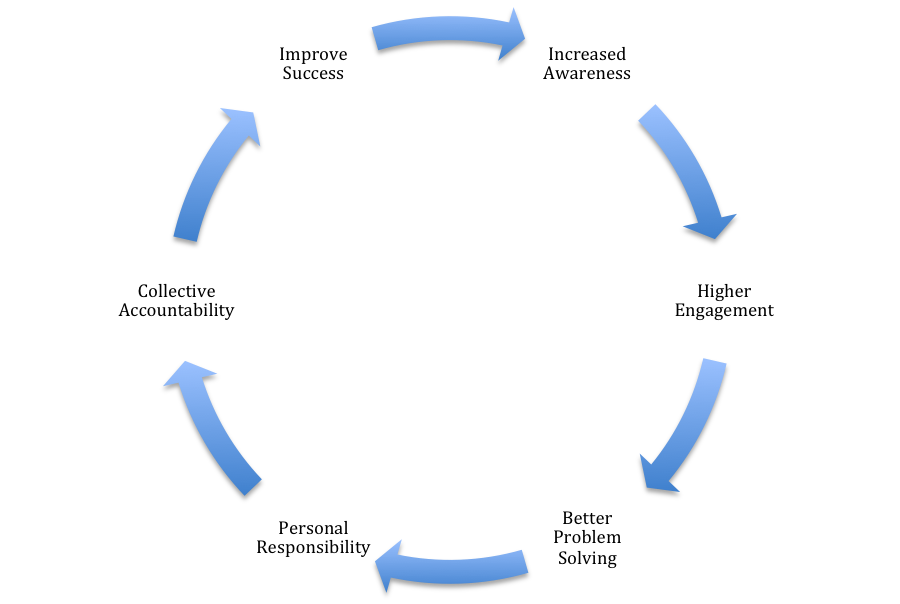Why Give a Damn:
“Transparency is a disinfectant for business – it’s going to clean things up but it’s going to hurt a lot.”
The author of this post, Wendy Lea, is CEO of Get Satisfaction, a leading customer engagement platform. Wendy serves as an angel investor, strategic advisor, and board member for a long list of startup companies. Wendy also chairs the board for the women’s entrepreneur group Watermark and serves on the board of the Silicon Valley Social Venture Fund (SV2.org). She has been recognized as a Top 100 Woman of Influence in Silicon Valley.
Transparency is a concept that gets lots of buzz in business, leadership, and culture. However, the daily grind of living, breathing, and practicing transparency is much less sleek. Businesses are complex, ever-changing organisms, and much like nature they are subject to chaos. In my experience, building a culture of transparency requires a deep-rooted commitment to being vulnerable, raw, and honest – both in periods of calm, and during the storm too.
First things first, let’s talk about trust.
I grew up in the Deep South. I was not raised to believe that trust was earned; I was taught that human beings should inherently be trusted. No one locked their doors or clutched their purses – the expectation was that people, in their most natural form, are open and honest beings. Over time, society has shifted from an expectation of inherent trust to earned trust. Earned trust requires that people prove and demonstrate their trustworthiness before it is given. This shift has a big impact on business; it means that for most people (employees, customers, partners, managers, etc.) the default condition is skepticism and doubt. In order to earn trust, businesses and the people running them, are expected to consistently demonstrate the attributes of a trusting relationship: openness, fairness, and honesty.
Why is transparency important?
If we’re not wired to trust, then why bother with transparency? The answer is actually pretty simple – trust, while much more difficult to build, is the gateway by which all information is processed. Technology has given people access to tremendous amounts of information without the tools to qualify it – separate the good from bad, useful from fluff. Trust has become a critical filter that influences what people let in and what they lock out. If a brand is trustworthy, the information they share is higher value and has the potential to be received and shared. If a brand is not trustworthy their messages will be filtered out and sent straight to a spam folder.
For a company to be transparent they have to deliver on what we call the “Company Pact” at Get Satisfaction; the essence of their brand delivered through their mission, values, product, and experience. It’s not enough to appear transparent, the company – and the people behind it – must embody and demonstrate transparency at every level of the organization, inside and out. If a company can’t wrap their head around that, they shouldn’t be transparent. They can’t. Don Peppers and Martha Rogers, authors of Extreme Trust, put it perfectly: “Transparency is a disinfectant for business – it’s going to clean things up but it’s going to hurt a lot.”
We’re in this together.
Here’s the most important thing that I’ve learned: the buck does not stop at transparency. Transparency is not about making people feel better or creating a cool company culture, it’s about setting the stage for responsibility and accountability. As a leader, it’s imperative that we create a path around transparency, moving it from an abstract concept to a concrete roadmap that will have a real impact on the development of people and the increased performance of the business.
I want employees to have access to more information because they need facts to understand context and create awareness. Once awareness is in the picture, there’s an opportunity to move people (and businesses) from passive to active – positioning them to take action and assume responsibility. This transition is tricky because there’s risk involved. I’m asking people to step outside the warm and fuzzy confines of their comfort zone and stretch to meet their true potential – increasing the sphere of possibility as well as failure. In a leadership or a business context, if I am willing to demonstrate that risk, to open myself as vulnerable and transparent, I am creating trust and encouraging the people around me to do the same. I am setting the tone and the message that we are in this together, each owning individual responsibility and sharing collective accountability for success.
Someone recently said, “Transparency is the new black”. To me, nothing could be further from the truth. Transparency is not an objective – it’s a strategy for success. Transparency increases business value by creating opportunities to deepen customer relationships, stimulate employee engagement, and help businesses make more informed, better, and faster decisions. For these reasons, investing in transparency is a compelling opportunity for businesses and leaders. But take it from me; it’s not for the faint of heart.
Burning Question:
What’s your experience with transparency? Do you think it’s a business driver? Or is it over-hyped buzz?




